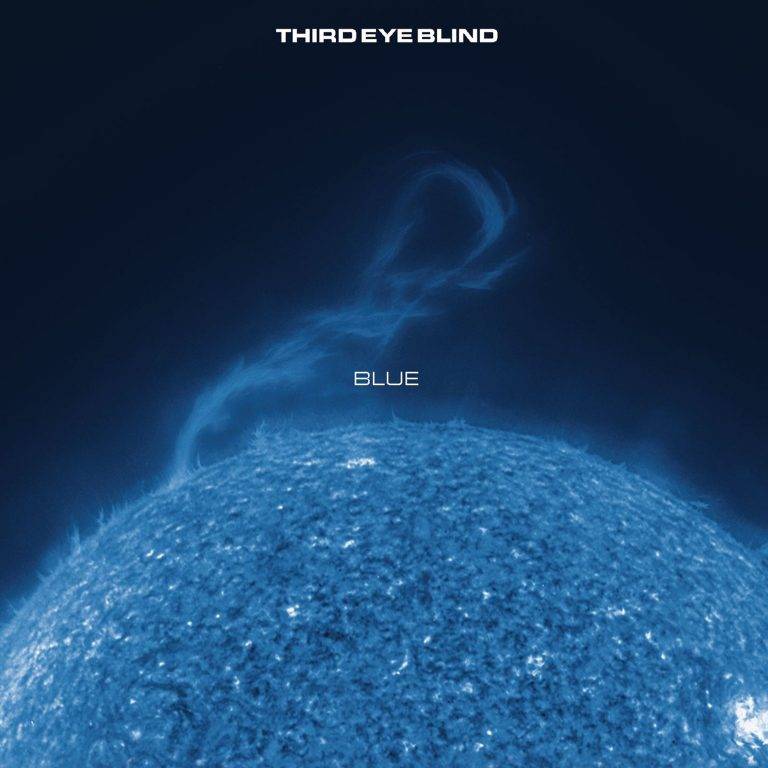

This problem surfaces because they sound natural when they're a little loose at that point, they're not too self-conscious to avoid hooks, which they seem to do quite often on Blue. TEB sound a little strained when they earnestly try to rock, and the same problem occasionally plagues their slower songs, though they do sound more self-confident there. Blue is certainly somber and serious, even with its moments of levity. It's as if he's trying to shake the ghost of "Semi-Charmed Life," the ingratiatingly hummable hit that gave TEB success but pegged them, in many observers' eyes, as a bubblegum one-hit wonder. Jenkins must have been aware of the fleeting nature of fandom in the '90s, since he pushes his band hard throughout the album. By the 1999 release of Blue, the group's second album, many of their peers from 1997 had faded away. Under the direction of Stephan Jenkins, Third Eye Blind celebrated these same virtues, but since they arrived at a time when there were a lot of glossy, even slick, bands marketed as alternative rock, it's easy to see why many observers believed TEB were no different than the legions of post-grunge rockers who dominated the charts that year. Sure, Matchbox 20 sold more records, but for TEB devotees, the San Franciscan band carried the torch originally lit by such breakthrough alt-rock acts as U2 and INXS - big, glossy bands that unabashedly celebrated both hooks and rock classicism. Unfortunately, the quality of Third Eye Blind’s music diminished slightly following this release, leaving this and “Self-Titled” on top.Of all the second-wave post-grunge bands from 1997, Third Eye Blind cultivated the most dedicated fan base. “Blue” possesses the variety factor, possibly just as much as its predecessor.Īlthough not as accessible as “Self-Titled,” “Blue” is a sensational album complete with creativity, darkness, and fun. Follow-up single Deep Inside of You is a very well-written ballad and 1,000 Julys is just plain fun. Lead single Never Let You Go is a simple, yet catchy and effective track, again utilizing Jenkins’ falsetto to its advantage. Even on Wounded, Jenkins’ high pitched yell is in action, he claims, “I don’t care baby I don’t care, NO!” His falsetto is also present on tracks such as The Red Summer Sun, almost screaming out lines “It’s been a long time a long time to walk with the mighty, walk with the mighty, so let me go, let me go.” The Red Summer Sun is unlike anything the band has done to this point, again illustrating the uniqueness of the album. Jenkins however, is still having a blast his high energy is an underscore of the record. “Blue” has its share of depressing songs, from Wounded to a personal favorite of mine 10 Days Late, in which the narrator is forced to deal with an early pregnancy. Everything here is exceptional, the piano and slow electric leads are delivered incredibly, and the emotion in Jenkins’ voice is impossible not to feel.

The beautiful and powerful Slow Motion may be the band’s greatest achievement, it surpasses pretty much everything on “Self-Titled” and everything after.

The track is driven by synth bass lines and guitar and vocal volume swells. Although “Blue” is not quite up to par with its predecessor in terms of quality, it tops “Self-Titled,” in terms of uniqueness. Musically, “Blue” was similar enough to “Self-Titled” to be successful, but also different enough to stand out as a separate commodity. Cadogan contributed a great deal of songwriting to these first two albums and was considered one of the major weapons of the band. In 1999, Third Eye Blind followed their tremendous debut with the superb “Blue.” “Blue” marks the final album in which Third Eye Blind had guitarist Kevin Cadogan in the lineup. Tracks such as The Background and Motorcycle Drive-By received critical acclaim, and were highlights of the release. The debut overall was energetic, passionate, and even depressing at times. Much of the band’s success was propelled by singles Semi-Charmed Life, Jumper, and How’s it Gonna Be. In Third Eye Blind’s case, their 1997 Self-Titled release was immensely popular, and appealed to both mainstream society and the critics. There are many benefits to releasing a highly successful debut. Review Summary: Third Eye Blind continues their greatness, with a superb follow-up record.


 0 kommentar(er)
0 kommentar(er)
